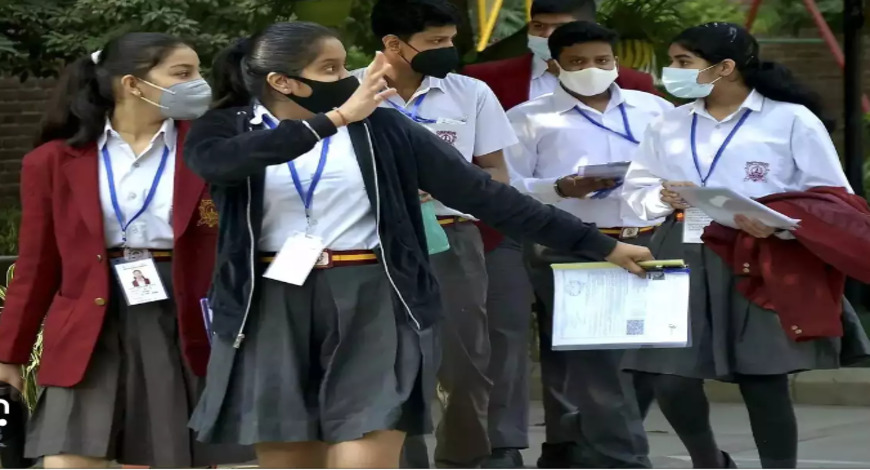- Economy
- Education And Career
- Companies & Markets
- Gadgets & Technology
- After Hours
- Healthcare
- Banking & Finance
- Entrepreneurship
- Energy & Infra
- Case Study
- Video
- More
- Sustainability
- Web Exclusive
- Opinion
- Luxury
- Legal
- Property Review
- Cloud
- Blockchain
- Workplace
- Collaboration
- Developer
- Digital India
- Infrastructure
- Work Life Balance
- Test category by sumit
- Sports
- National
- World
- Entertainment
- Lifestyle
- Science
- Health
- Tech
PGI- D Assessing The Indian Education Status At District Level
The most applauded thing about the index is that this highlights the loopholes and shortcomings of district-level education and urging the authorities to work more effectively
Photo Credit :

School Education is considered the foundation of the whole career, it must be strong and the best in every aspect. The government in India has been trying to make improvements in school education through various schemes over the years. Performance Grading Index is one assessment report that is a relatively new index that measures the performance of states in school education. PGI-D aims to measure the performance of schools in every district over the policies rolled out by states and central government. PGI-D works as a performance review of the education industry's ongoing education pattern and overall outcome.
According to the PGI-D, with about 14.9 lakh schools, 95 lakh teachers, and nearly 26.5 crore students from varied socio-economic backgrounds the Indian education sector is vast and also consists of a huge network. As India contains a large population of youth, the index is significant in order to rejuvenate the education quality in the country right from the district level.
PGI-D assess the performance of schools based on 6 categories viz., Outcomes, Effective Classroom Transaction, Infrastructure Facilities & Student Entitlements, School Safety & Child Protection, Digital Learning and Governance Process. These categories are further divided into 12 domains, viz., Learning Outcomes and Quality (LO), Access Outcomes (AO), Teacher Availability and Professional Development Outcomes (TAPDO), Learning Management (LM), Learning Enrichment Activities (LEA), Infrastructure, Facilities, Student Entitlements (IF&SE), School Safety and Child Protection (SS&CP), Digital Learning (DL), Funds convergence and utilization (FCV), Enhancing CRCs Performance (CRCP), Attendance Monitoring Systems (AMS) and School Leadership Development (SLD).
Commenting on the insights given by PGI-D, Ajay Gupta Founder of Bachpan Play Schools and Academic Heights Public Schools, said, “PGI-D (Performance Grading Index for Districts) Report is a great initiative on the part of our government. This will help to assess student performance and learning outcomes on a deeper level. Identifying gaps at this level is going to facilitate much-needed reforms in our country’s education system and set the path for the future.”
The most applauded thing about the index is that this highlights the loopholes and shortcomings of district-level education and urging the authorities to work more effectively. Talking about its critical side, Raju Varghese, Director, IQAC & Global programs, Lexicon Management Institute of Leadership and Excellence said, “PGI-D works well. However, the number of districts participating needs to increase in number. An attempt must be made by districts to clock the ‘Daksh’ grade as none of the districts has got the highest grade, so far. The index is primary in nature as it is a first step to measure districts across specific parameters.”
He further added that the school education system becomes dynamic by moving from the docile and rote phase to the dynamic phase. Creativity in learning systems is explored further. The emphasis on alternatives to teaching pedagogies is better explored.
Sharing thoughts over the PGI-D report, Poonam Kochitty, Principal, Seth Anandram Jaipuria School, said, "The PGI-D assesses the performance of the school education system at the district level with an index-based system. It is grouped under 6 categories, Outcomes, Effective Classroom Transaction, Infrastructure Facilities & Student Entitlements, School Safety & Child Protection, Digital Learning and Governance Process. The findings indicate that none of the 748 districts secured the top two grades – Daksh and Utkarsh. Most districts were in the bottom three grades (less than 10 per cent to 30 per cent ).
In the digital learning (DL) domain, in 2021-22 majority of the districts were in the bottom 3 grades which shows the poorest performance in this parameter as compared to the others.
Students are the bricks over whole nation build up and education is the element that turns them into capital for their respective countries, hence the assessment index like PGI-D works as a critical as well as prominent way to know the on-ground situation of ongoing education pedagogy in India and offer proper space to make a quick fix to it.
